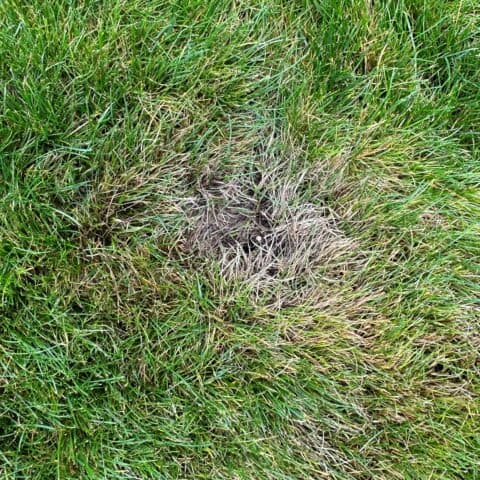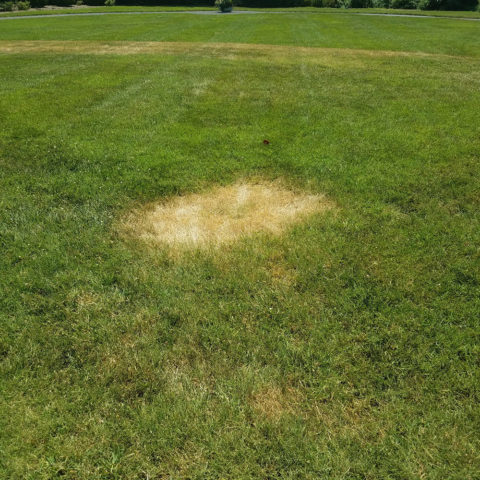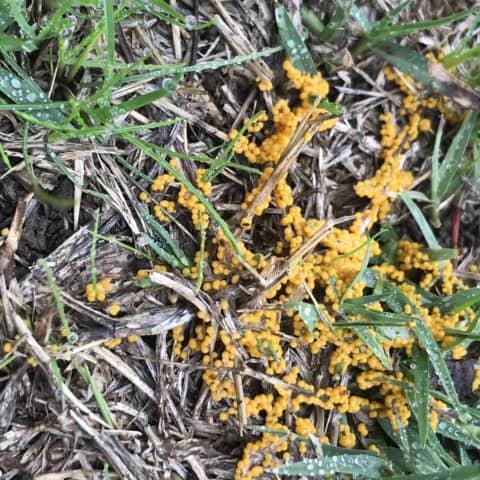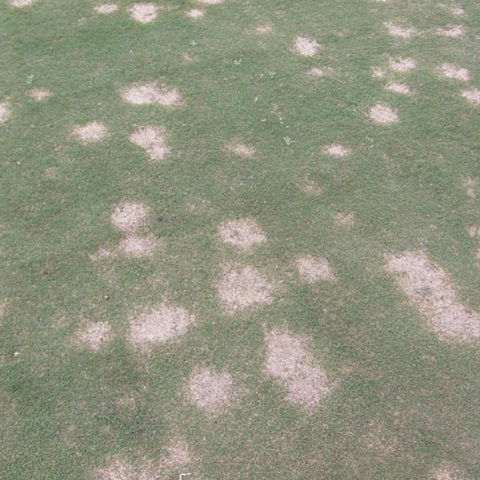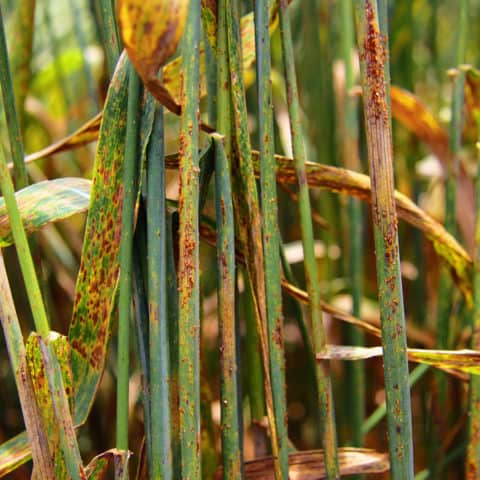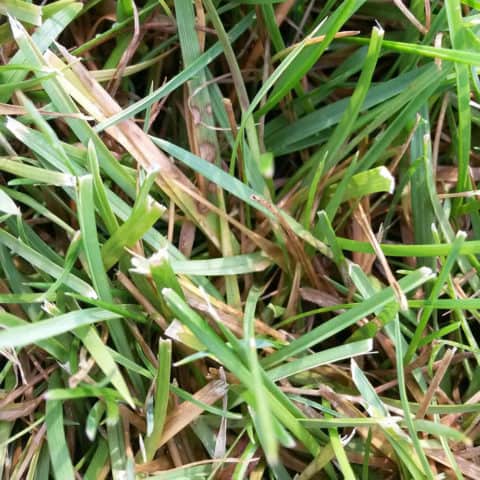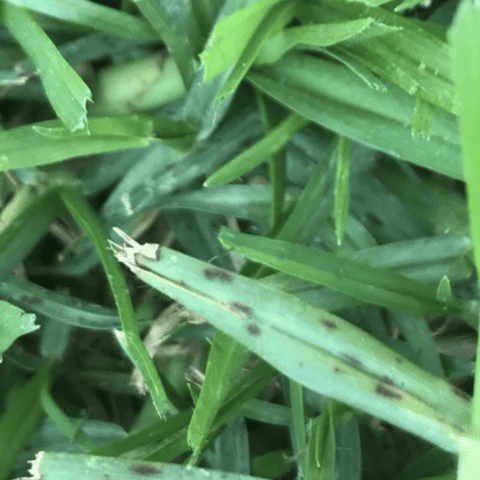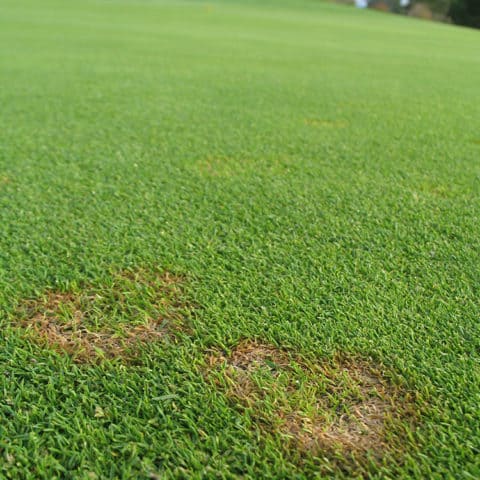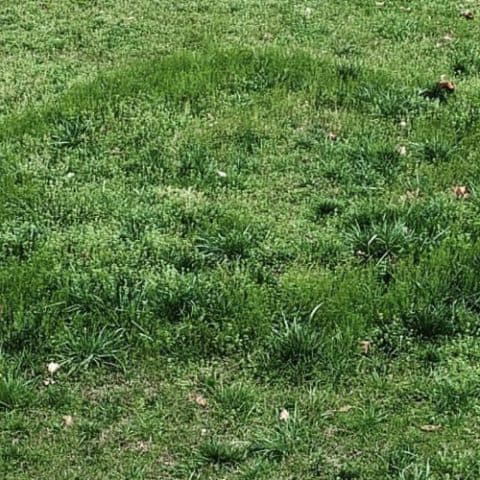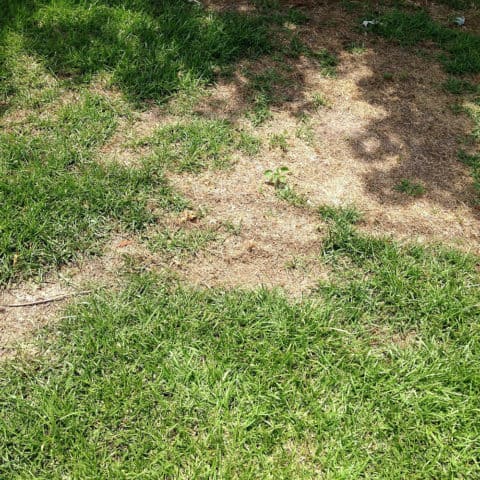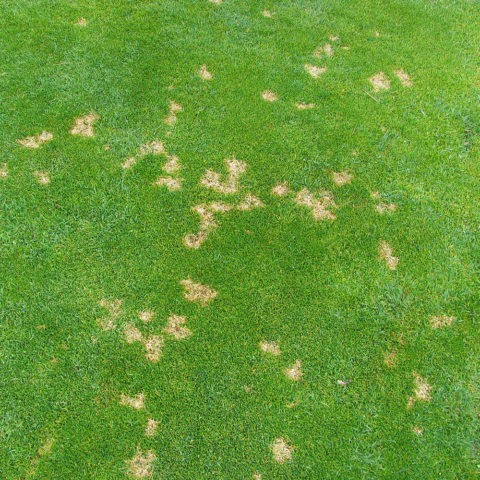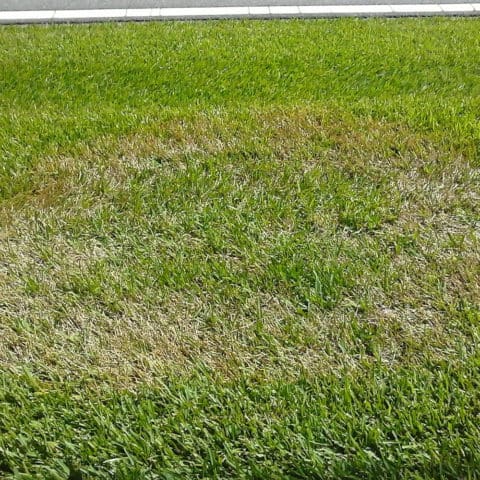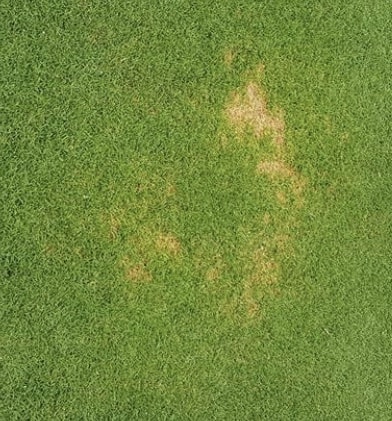Diseases & Fungus
Leptosphaerulina Leaf Blight
Leptosphaerulina spp Leptosphaerulina leaf blight, a fungal disease, can affect a wide range of turfgrass species predominantly cool season varieties, causing aesthetic damage and reducing overall turf health. This guide provides information on identifying, understanding, and managing Leptosphaerulina leaf blight in your lawn. The Cause and Susceptible Turf The culprit behind this disease is a fungus …
Read moreTake-all Patch
Gaeumannomyces graminis var. avenae Take all Patch is part of the ERI group of fungi. Mainly found on newer Bentgrass greens. Initially small, light-brown dead patches appear on turf resembling Fusarium. Once Take all Patch is established, the patches continue to grow throughout the year, causing the turf to appear a bronze to red colour …
Read moreSlime Mould
Slime Mould affects all turfgrass species and can take on various appearances from a dusty spore to yellow spheres like caviar. It can smother grass blades, turning them grey, pink, purple, white or yellow. The affected turf forms patches up to 60 cm in diameter and it grows outwards, yet there is no immediate damage …
Read moreSpring Dead Spot
Ophiosphorella (formally Leptosphaeria) herpotricha, O. korrae, and O. narmari. Spring Dead Spot (SDS) is part of the ERI Family of diseases. Symptoms can appear in lower soil temperatures when growth is slow to dormant, depending on the season, as early as late Autumn. Traditionally it was found often in late winter and spring, when turf resumes its …
Read moreRust
Puccinnia & Uromyces species Rusts are fungal diseases that involve many different strains and affect a wide variety of plants, including grasses. Most warm and cool season turfgrass species are susceptible to rust diseases; the turf health is irrelevant as it will also attack a healthy plant. Orange spores appear underneath the leaves, making Rust …
Read morePythium Blight
Pythium spp. Pythium blight first appears as small, irregularly shaped spots ranging from 12 mm to 100 mm in diameter. Leaves appear water-soaked in appearance at first, then shrivelled. Diseased patches fade to a light-brown or grey colour. Groups of spots frequently join together. At times, the shape of the affected areas may resemble elongated …
Read moreBlack or White Helminthosporium (Black or White Helmo)
Bipolaris spp. Drechslera spp. and Exserohilum spp. Black or White Helminthosporium (Helmo) is a common black or white leaf spot disease which is actually caused by 3 different species of fungi (listed above). The disease cycle is generally short, but can cause some unsightly damage very quickly. ‘Helmo’ is caused by a common and serious group of diseases, attacking …
Read moreMicrodochium (Fusarsium) Patch
Microdochium (Microdochium nivale) (formally Fusarium) Patch is found in warm season and cool season grasses like wintergrass, bent grass, fescue, ryegrass, Kentucky Bluegrass and low mown Kikuyu in cooler climates. Initially round patches appear as small, water-soaked spots less than 5 cm in diameter. They then change in colour from orange brown to dark brown …
Read moreFairy Ring
Fairy Ring is caused by the Basidiomycetes, group of fungi of which there are at least 50! species known to cause it. It is also indiscriminate to turf varieties; all species of turf can be affected by it. Fairy ring tends to occur most often in soils and turf grasses with no to little nutritional inputs, …
Read moreERI or Ectotrophic Root Infecting Fungi
Also referred to as Couchgrass Decline, turf grass symptoms of ERI disease start by thinning out of the surface and can include straw-coloured patches that range in size from 30 cm to 1 metre in diameter. Ectotrophic root-infecting fungi (ERI fungi) are a factor in causing patchiness and poor root health in couch grass. The term …
Read moreDollar Spot
Dollar Spot, caused by the fungus Clarireedia jacksonii (formerly Sclerotinia homoeocarpa), Dollar spot is a common and persistent disease in Australian lawns, particularly during mild, moist periods in spring and autumn. It affects both cool-season and warm-season grasses, including couch, kikuyu, ryegrass, and bent grass. Signs and Symptoms of Dollar Spot Starts off as small …
Read moreBrown Patch
Brown Patch (Rhizoctonia Solani) or commonly called “Rhizo” Brown Patch disease occurs on cool season and warm season turf grass species. Identification of Brown Patch Circular or irregular patches from 5cm to over 1m in diameter. Can have smoke ring or halo affect during “peak” fungal activity. warm season grasses can just look “weak” and …
Read moreAnthracnose
Anthracnose is a selection of fungal diseases that either attacks the roots and/or the foliage. It is quite invasive in warm, humid environments. The diseases often follow a common symptom pattern. Basal rot is where the disease affects crown and root tissue, whereas the key disease affecting the leaves is foliar blight. Basal rot is …
Read more
